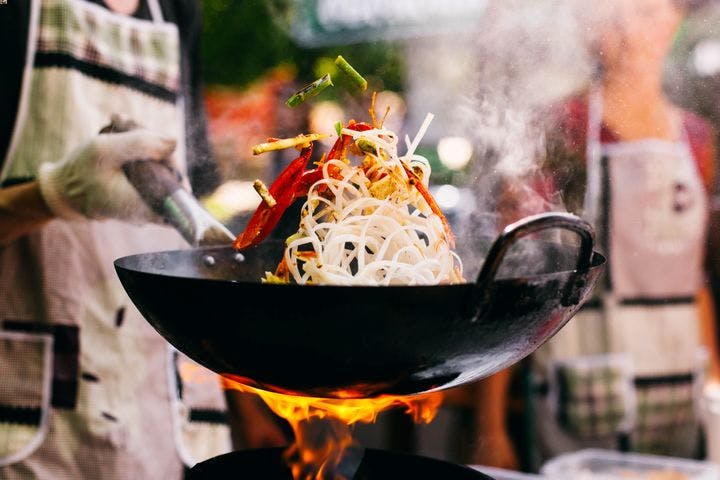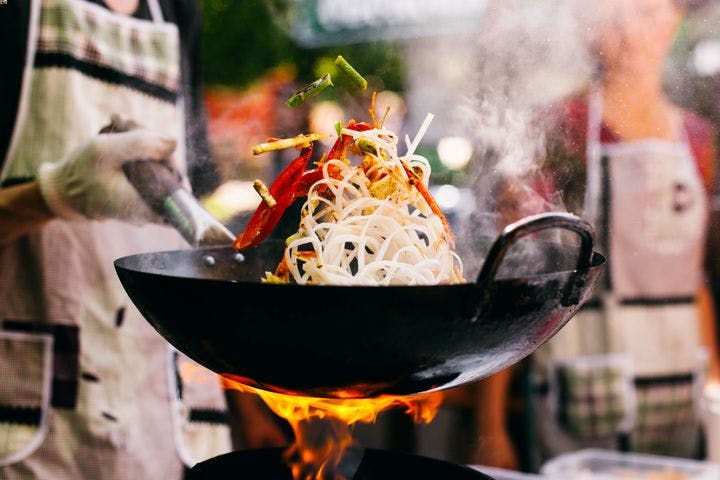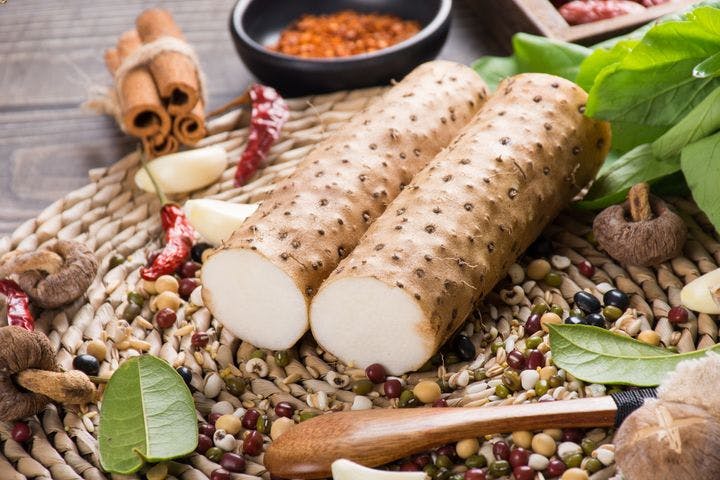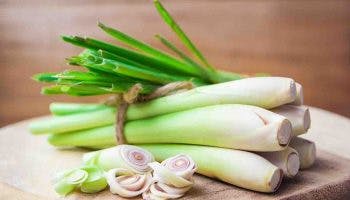6 TCM – Approved Cooking Ingredients to Elevate Your Dishes
Published | 6 min read
Use TCM herbs to enhance your cooking and make desserts taste better. This is also a good way to nourish your Liver, Kidney, Spleen and Stomach.

Everyone knows that Traditional Chinese Medicine (TCM) is, well, medicine, to take as supplements or as an alternative to modern formulas. But did you know that TCM herbs and remedies can be used as cooking ingredients in Chinese soups, at home or in restaurants to enhance the flavours of dishes?
Since the COVID-19 pandemic, many people are changing the way they eat. To boost their immune system and fight infections, they add more vitamins and supplements like vitamin C and B complex to their daily diet.
Vitamin C and modern supplements aside, TCM ingredients are usually packed with tons of other vitamins and minerals to help keep your immune system strong. If you haven’t thought about adding them as cooking ingredients to your meals and desserts to enhance flavours, maybe it’s time you should. Talk about killing two birds with one stone!
Read on to find out what TCM ingredients, herbs and remedies are best as cooking ingredients for you and your family.

Add These Ingredients to Your Cooking and Desserts
According to Eu Yan Sang Physician Ng Teck Xian, there are plenty of Chinese herbs and ingredients that you can use for your everyday cooking to improve both your health and food. Here, he shares some TCM cooking ingredients you can incorporate into your meals.
1. Dried Longan
Usually found in sweet desserts, dried longan or long yan rou (龙眼肉) contains warm properties. It’s best used to invigorate the Spleen, nourish the Heart, qi (vital energy) and Blood, as well as soothe the nerves. This cooking ingredient can tranquilise and revitalise the mind too. It’s perfect for people who have a Deficiency in qi and those suffering from anaemia.
Although dried longan is sweet with a greasy texture, it can also cause internal Heat. If you are prone to internal Heat, or a diabetic patient, or are pregnant, it’s best to avoid dried longan.
You can eat dried longan raw and physician Ng recommends eating five pieces a day. You can use it to make tea, desserts and even soups for the natural sweetness. Remember not to eat too much as it increases internal Heat.
2. Lily Bulb
They usually come in thin shavings commonly used to ease chronic coughs and other febrile and respiratory diseases. It can also nourish yin (passive energy) and the Lungs, as well as clear away Heart-Fire and tranquilise the mind. The Lily bulb is slightly bittersweet and contains cooling properties, which are associated with the Lung and Heart meridians.
You are recommended to consume only 6-12g of lily bulbs a day, due to its cooling nature. If you are prone to Cold Syndrome Deficiency or excrete loose stools easily, then it’s important to stay away from it.
Feel free to add the recommended dosage to your porridge and soups for that bittersweet taste. You can also cook it with Chinese yam and lotus seeds in porridge. For desserts, pair it with white fungus or mung bean for a more enhanced flavour.
3. Red Dates
In Western countries, you’ll find the flowers and leaves of red dates being used in perfumes and as potpourri. However, in TCM, they are used as medicinal herbs, mainly to aid and restore the Spleen’s energy, replenish qi, nourish the blood, soothe nerves and ease the mind. It’s perfect if you often suffer from a loss of appetite and loose stools due to Deficiencies of the Spleen. Red dates have warm properties and are associated with the Spleen and Stomach meridians.
Red dates have a naturally sweet taste to them so diabetic patients and people with Damp Heat constitution should consume less of this herb.
There are many ways to use red dates as a cooking ingredient. The most common method is to boil it in soup with chicken and other herbs. You can also add red dates to porridge to make jujube porridge, or simply boil them in water to make tea.

4. Chinese Yam
Also known as huai shan (淮山) these pale-yellow tubers are one of the most commonly used herbs in TCM. It can help strengthen the Kidney, to maintains fluid balance in the body and is also beneficial to the Liver. Chinese yam is sweet in taste but flat in nature, and is associated with the Lung, Spleen, Stomach and Kidney meridians. Furthermore, it can also be used to control nocturnal emissions.
You must be careful with Chinese yam if you are prone to Damp-Heat constitution, or if you have fever, cold and constipation. Otherwise, they are a great addition as a cooking ingredient because it lends a mildly sweet flavour to dishes. Chinese yam is usually sold as powders and blended with other herbs.
Use it as seasoning in stir-frys and even marinades. Chinese yam goes well with lotus seeds, lily bulb and other Spleen and Stomach herbal supplements when you’re making soup or porridge.
5. Chinese Wolfberries
These sweet berries impart a tantalising bright red hue to the dish it is cooked in and goes hand-in-hand with red dates. Of course, they are packed with medicinal properties as well. Physicians often recommend Chinese Wolfberries to nourish the Liver and Kidneys, improve blood circulation, ameliorate dizziness and tinnitus, and possess a wealth of ophthalmologic benefits. They’re also associated with Lung, Liver and Kidney meridians.
However, on days when you’re experiencing fever, cold, or diarrhoea due to Spleen Deficiency, then it’s best to avoid the Chinese Wolfberries altogether. If you’re well, then add some when you’re boiling soup, cooking porridge, steaming herbal chicken or making herbal teas. However, keep to a maximum of 20g per day per person, as it’s not advisable to consume too much, according to Physician Ng.
6. Cordyceps Flower
This flower is flat in nature, and is associated with the Lung, Spleen, and Kidney meridians. It’s used to nourish the Lungs when you have coughs, and the Kidneys to replenish its vital essence.
You should stay away from cordyceps flowers when you have a fever, cold or internal Heat. If you are healthy, add a maximum of 10g only to meals daily, as it may increase blood pressure. Cordyceps flowers can be boiled with soups, especially when chicken, lean meat or pork ribs is used. It also goes well with Chinese yam and Chinese Wolfberries, especially in desserts.
Give modern medicine and supplements a break and try adding these Chinese herbs as cooking ingredients in your diet. Of course, always consult a TCM healthcare professional first before consuming any herbs, remedies, and concoctions.
This is an adaptation of an article, “Supercharge Your Recipes with These 7 TCM Ingredients” which first appeared on the Eu Yan Sang website.
References
- DW. 2019. Healthy eating in traditional Chinese medicine. [online]. [Accessed 20 April 2022]
- Academia. 2016. Foods according to Traditional Chinese Medicine. [online]. [Accessed 20 April 2022]
Share this article on
Was This Article Useful to You?
Reviews (1)
Like 🙂






